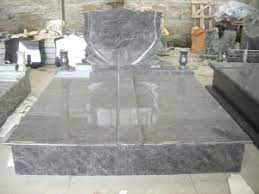Marble and granite monuments manufacturing is a complex cycle, involving many various procedures. The interaction starts by creating a stencil for the monument plan. This stencil is typically made of elastic with an adhesive backing. The plan is then removed using a cutting machine or a X-Acto blade, and then it is adhered to the granite. After the monument is attached to the elastic stencil, the monument is taken into the blasting room. The blasting system utilizes compacted air to blast fine particles of abrasive against the granite.
Advanced Stone's broad inventory of stone includes a range of various styles, including lawn plaques, pad markers, upstanding headstones, and companion monuments. The company stocks various sorts of granite, including black, brown, red, green, and pink. These materials are also suitable for etching and inscriptions, providing sufficient contrast to the plan. And since the stone is so fine, it is clear for engraving. столешница на заказ
While choosing a monument material, you ought to initially think about the kind of material that you want. Marble monuments are often made of natural stones. Sandstone, conversely, need little maintenance and are more affordable. Bronze is more affordable than granite monuments, however it isn't as durable or esthetically pleasing as marble or granite. Bronze is generally more appropriate for flat markers. Bronze headstones, in any case, are more costly than granite or copper, so consider this before choosing a bronze headstone.
Assuming you pick granite, you'll be more than happy with the material's natural beauty and durability. With a thick crystalline construction, granite won't be marked, chipped, or distorted when presented to weather or climate changes. Granite will also not twist, crack, or break into million pieces on the off chance that a tree branch falls on it or a tornado topples it. To put it plainly, granite is an ideal material for monuments.
The cycle begins with cutting large slabs of granite. Then, colossal circular saws furnished with diamond-tipped blades are utilized to cut the large granite blocks. The slabs are then cleaned and packaged. Before the final item is delivered to a retailer, the granite blocks are completely checked for variety consistency and flaws. At the primary indication of a chip or scratch, they are eliminated from the production line. The stone is then sent to a local monument retailer.
The most important phases in making monuments from marble or granite were relatively easy. In the eighteenth 100 years, marble and granite were largely utilized for construction. The manufacturing system was relatively inexpensive and utilized thousands of laborers. By the late 1800s, marble and granite monuments manufacturing had turned into its very own industry. This industry is as yet active today, yet it is losing ground to concrete and other materials. In the event that you are interested in creating a monument of any kind, consider investing simultaneously.
Not at all like traditional gravestones, monuments made of stone are easy to create and carved. In addition, they are inexpensive, especially compared to gravestones made of wood. Marble and granite monuments manufacturing also began during the industrial revolution. Power and steam power assisted with making the cutting of stone faster. These innovations combined with planned family parcel sales made it easier to create multi-piece monuments and make them more desirable.

No comments:
Post a Comment